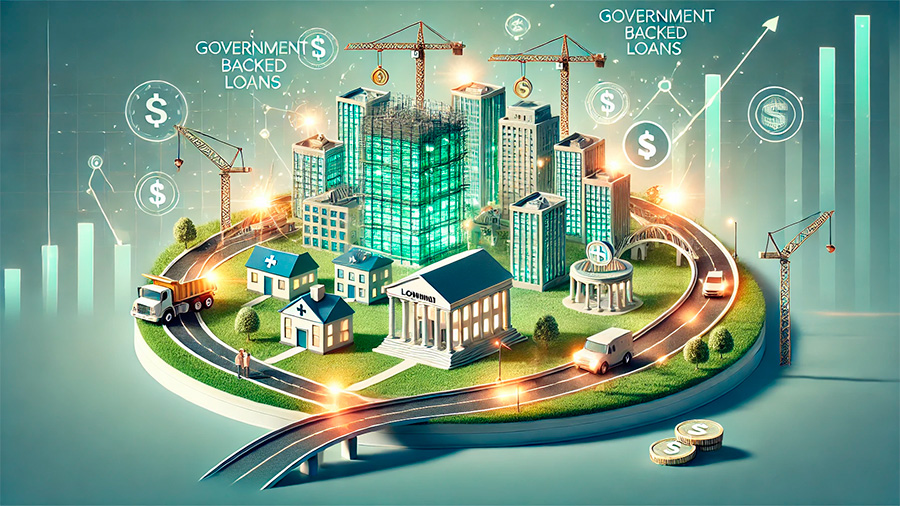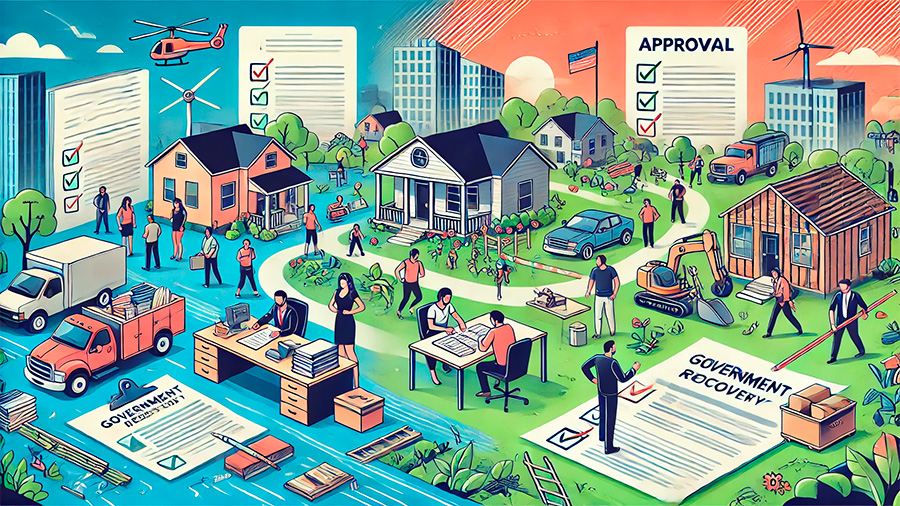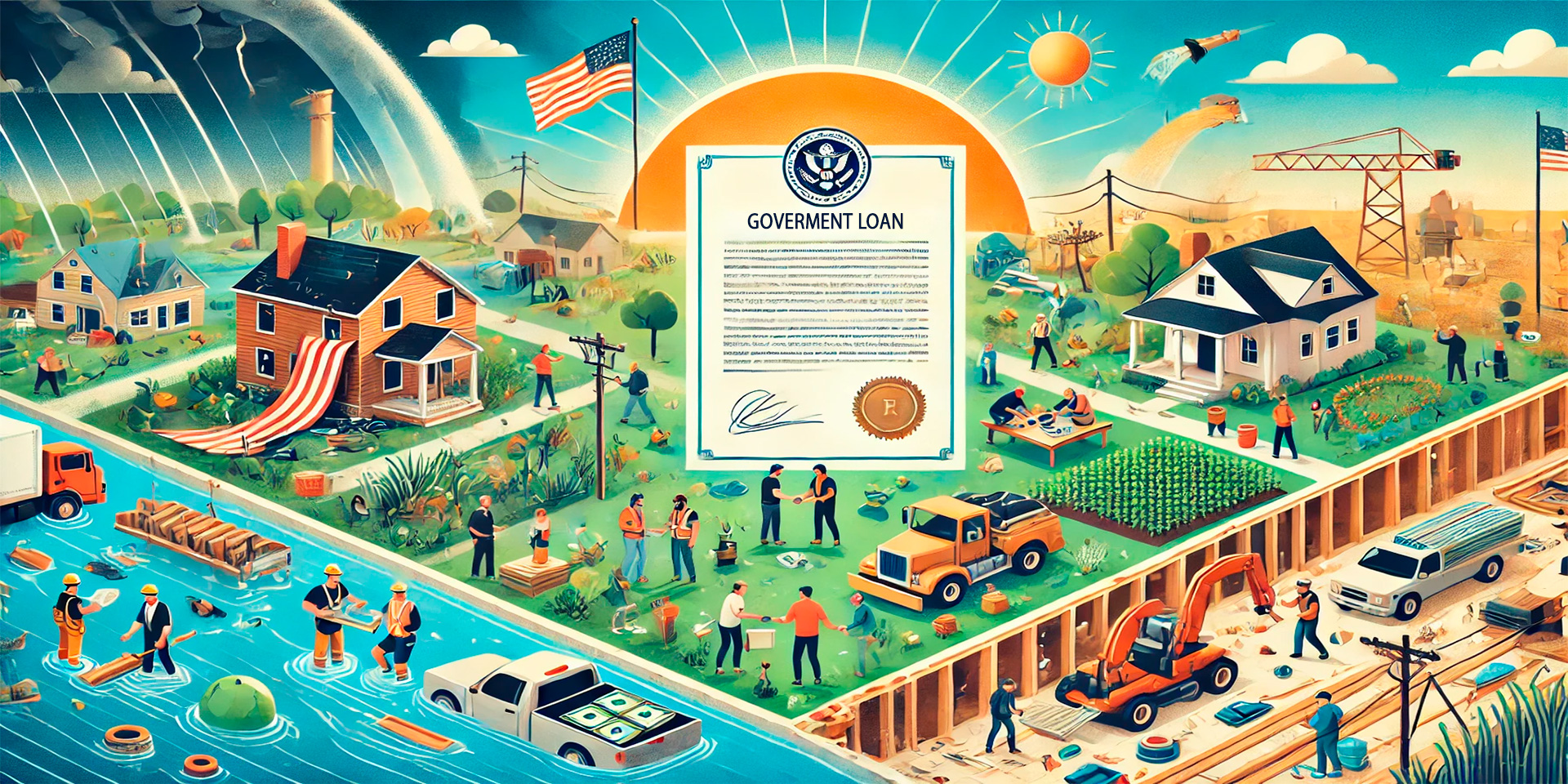Weather disasters such as hurricanes, wildfires, floods, and tornadoes can devastate communities, leaving behind damaged infrastructure, homes, and local economies. In the aftermath of such events, recovery can take years, and rebuilding efforts require significant financial resources. Government-backed loans play a critical role in providing the necessary funds to help communities recover, rebuild, and restore normalcy. This article explores government loan initiatives designed to support communities impacted by weather disasters, focusing on the types of loans available, their purpose, and how they contribute to long-term recovery.
The Role of Government Loans in Disaster Recovery
Government loans serve as an essential financial tool in disaster recovery, providing low-interest or even deferred loans to individuals, businesses, and local governments. These loans help communities rebuild homes, restore infrastructure, and revive local economies that have been severely impacted by weather events. Without these loans, many communities would struggle to recover and would face long-term economic and social challenges.
1. Federal Disaster Loans: Providing Immediate Relief
One of the primary sources of government financial aid during natural disasters is federal disaster loans. These loans are often issued by the Small Business Administration (SBA) or through the Federal Emergency Management Agency (FEMA). Federal disaster loans are designed to help individuals, businesses, and governments cover the immediate costs of recovery, including repairs, equipment replacement, and temporary relocation.
Key features of federal disaster loans:
- Low-interest rates: Federal disaster loans typically come with low-interest rates to make repayment more manageable for individuals and businesses.
- Long repayment periods: Many disaster loans are offered with extended repayment periods, sometimes up to 30 years, allowing borrowers to pay off the loan gradually.
- Flexible eligibility requirements: These loans are often available to a wide range of applicants, including homeowners, renters, and small business owners, who meet the eligibility criteria.
2. SBA Disaster Loans for Businesses
The Small Business Administration (SBA) plays a vital role in providing disaster relief loans to businesses impacted by weather events. SBA disaster loans are specifically designed to help businesses recover by covering operational costs, replacing damaged equipment, and rebuilding infrastructure. These loans allow businesses to regain their footing quickly and resume operations, ensuring that local economies can start recovering.
How SBA disaster loans help businesses:
- Economic Injury Disaster Loans (EIDL): EIDLs provide working capital to help businesses cover operational expenses that are not covered by insurance, such as payroll, rent, and utility bills.
- Physical Disaster Loans: These loans cover the cost of repairing or replacing damaged or destroyed property, equipment, and inventory, enabling businesses to restore operations quickly.
- Affordable terms: SBA disaster loans typically offer favorable terms, such as low-interest rates and long repayment periods, making it easier for businesses to recover without facing undue financial strain.
3. FEMA Disaster Assistance Loans for Individuals
FEMA (Federal Emergency Management Agency) provides loans and grants to individuals and families affected by severe weather events. These loans are aimed at helping individuals repair and rebuild their homes, replace essential personal property, and cover other immediate expenses related to the disaster.
FEMA disaster assistance loans and grants:
- Temporary housing assistance: FEMA provides funding for temporary housing costs if homes are uninhabitable due to disaster damage.
- Home repair loans: FEMA offers low-interest loans to homeowners for repairs to ensure that their homes are safe and livable.
- Personal property replacement: If essential belongings, such as appliances, furniture, or vehicles, are destroyed, FEMA can provide funding to replace them.

Loans for Infrastructure and Public Facilities
In addition to individual and business loans, government-backed loans also play a significant role in rebuilding and restoring critical public infrastructure such as roads, bridges, schools, and healthcare facilities. These loans help local and state governments secure the capital needed to repair and maintain public services that are vital for community survival.
1. Public Assistance Loans for Local Governments
After a disaster, local and state governments can access loans through federal programs like FEMA’s Public Assistance (PA) program. These loans provide the financial resources needed to rebuild public infrastructure, restore essential services, and maintain the community’s functionality. From repairing schools to restoring transportation networks, government-backed loans for public facilities are essential for the long-term recovery process.
How public assistance loans support local governments:
- Restoring infrastructure: These loans help fund the repair of roads, bridges, and utilities that are vital to everyday life and commerce.
- Rebuilding public services: Public assistance loans support the rebuilding of essential services like healthcare facilities, schools, and government offices, ensuring the community can function again.
- Re-establishing safety and security: Government loans can fund the restoration of emergency response systems, law enforcement offices, and fire departments, critical to community safety.
2. Loans for Mitigation Projects
In addition to providing funds for rebuilding, government loans can also be used for mitigation projects aimed at reducing the impact of future disasters. These projects include flood barriers, infrastructure upgrades, and improved building codes designed to make communities more resilient to future weather events.
How loans support mitigation projects:
- Flood prevention systems: Loans can help fund the construction of flood barriers, levees, and drainage systems to reduce the risk of future flooding.
- Building code improvements: Loans can be used to help local governments enforce stronger building codes, ensuring that homes and buildings are better equipped to withstand extreme weather.
- Infrastructure upgrades: Loans may be used to enhance infrastructure, such as roads and utilities, making them more resilient to severe weather events in the future.

Best Practices for Securing Government Loans for Disaster Recovery
While government loans are a crucial tool for recovery, securing them requires following specific steps and meeting eligibility requirements. Knowing how to navigate the application process and effectively utilize the funds can ensure that the loan supports recovery efforts in the best way possible.
1. Meet Eligibility Requirements
Each type of government loan comes with its own set of eligibility criteria. Businesses, individuals, and local governments must meet these requirements to qualify for financial assistance. It is important to thoroughly review the loan guidelines and ensure that the application is completed accurately and on time.
Key eligibility considerations:
- Residency and business location: Some disaster loans are only available to residents or businesses within specific disaster zones.
- Insurance requirements: Certain loans may require proof of insurance before a loan application can be considered, or the loan may cover only the amount not reimbursed by insurance.
- Financial documentation: Applicants will need to provide detailed financial statements to prove the need for financial assistance.
2. Properly Allocate Loan Funds
Once approved, it’s essential to use government loan funds strategically. For businesses, this means prioritizing operational continuity, such as paying employees and restoring supply chains. For individuals, loan funds should be allocated to repairing essential property and covering temporary housing costs.
Best practices for using loan funds:
- Prioritize essential needs: For businesses, focus on restoring operations and retaining employees. For individuals, repair critical infrastructure and cover immediate living costs.
- Monitor expenditures: Keep detailed records of all expenditures to ensure that loan funds are used appropriately and to avoid financial mismanagement.
- Invest in long-term recovery: Consider using loans for infrastructure improvements or mitigation projects that will reduce future disaster risks.
Conclusion
Government loans are a vital resource for communities affected by weather disasters. By providing low-interest, flexible loans to individuals, businesses, and local governments, these financial tools help communities rebuild quickly and recover from the devastating effects of natural disasters. Whether used to repair homes, restore public infrastructure, or fund mitigation projects, government loans play a critical role in ensuring long-term recovery and resilience. By understanding the loan options available and following best practices for their use, communities can effectively navigate the challenges of rebuilding after a weather crisis.

